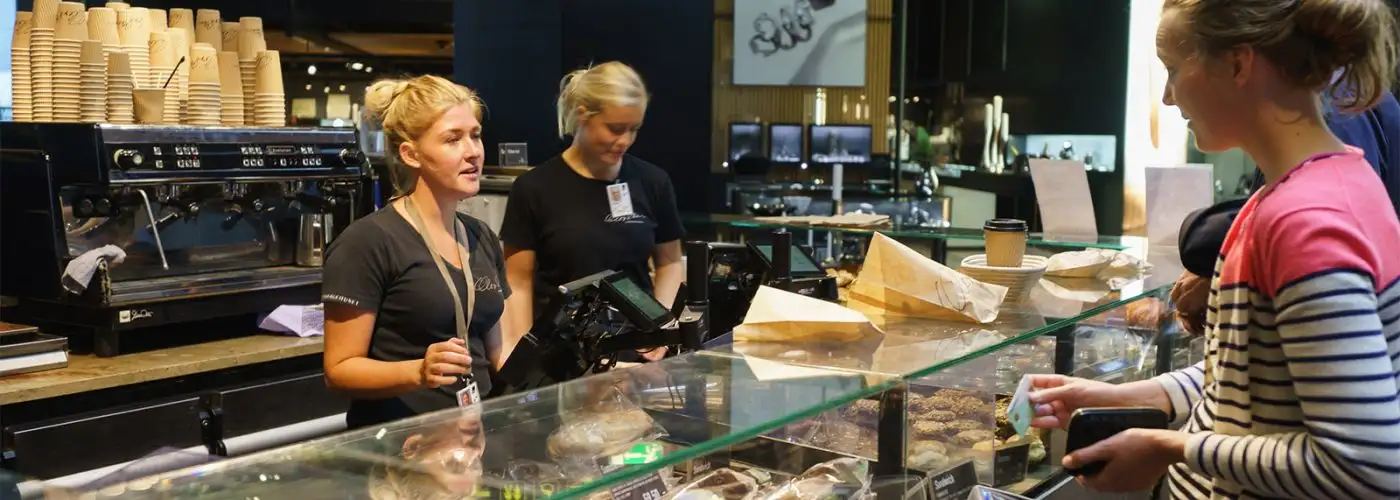Copenhagen is often considered the happiest city on Earth. Could it be because of the food? Once a veritable culinary Siberia, Denmark’s capital has grown into a true gastronomic metropolis. And while traditions run deep, new innovation continually adds flair to the city’s ever-evolving tasting menu of flavors. From trendy New Nordic cuisine to souped-up street fare and “recycled” meals, here are 10 of the most progressive, exciting, and enticing food finds in Copenhagen right now.
Image Gallery
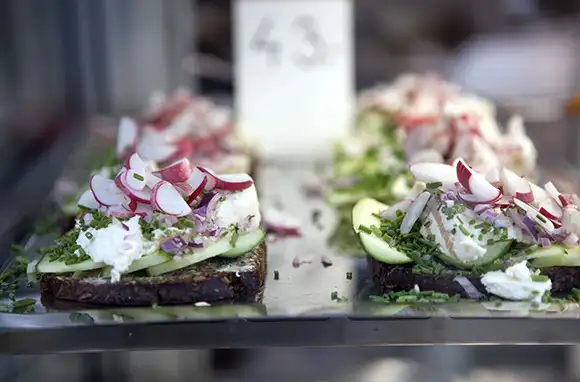
Smørrebrød (Open-Faced Sandwiches)
The way to do lunch in Denmark? Open-faced—with toppings like hard-boiled eggs, smoked salmon, and sliced radishes heaped onto dark, sourdough rye bread. Once an affordable midday meal for farmers and factory workers (and later Danish bourgeoisie), the classic smørrebrød hit its stride in the 19th century but eventually lost its fashionable status. That is, until Adam Aamann opened Aamanns Takeaway in 2006 and brought lunch back, transforming the humble sandwich into an edible work of art. Since then, smørrebrød, in both traditional and modern forms, has become a major luncheon trend in Copenhagen restaurants. And yes, there's also a smørrebrød app.
Is smørrebrød too hard to pronounce? If so, call it a smushi and head to the Royal Smushi Cafe, where smaller sushi-sized versions are whimsically plated on china dishes from the adjacent Royal Copenhagen flagship store.

Smørrebrød (Open-Faced Sandwiches)
The way to do lunch in Denmark? Open-faced—with toppings like hard-boiled eggs, smoked salmon, and sliced radishes heaped onto dark, sourdough rye bread. Once an affordable midday meal for farmers and factory workers (and later Danish bourgeoisie), the classic smørrebrød hit its stride in the 19th century but eventually lost its fashionable status. That is, until Adam Aamann opened Aamanns Takeaway in 2006 and brought lunch back, transforming the humble sandwich into an edible work of art. Since then, smørrebrød, in both traditional and modern forms, has become a major luncheon trend in Copenhagen restaurants. And yes, there's also a smørrebrød app.
Is smørrebrød too hard to pronounce? If so, call it a smushi and head to the Royal Smushi Cafe, where smaller sushi-sized versions are whimsically plated on china dishes from the adjacent Royal Copenhagen flagship store.

Organic Hotdogs
Perfect for an on-the-go bite, the traditional Danish hotdog is having a renaissance. In the early 1900s, the pølsevogn, or sausage wagon, began rolling down Copenhagen streets, dishing out the skinny franks, dyed bright red (to indicate day-old pork) and smothered with pickles, crispy onions, mustard, ketchup, and remoulade (a sweet mayo sauce). While there were hundreds of carts scattered throughout the city by mid-century, fast-food competition rose, and the popularity of the fatty and salty dog waned. However, chefs today are reinventing Denmark's original street food to make it both healthier and more interesting.
At Pølse Kompagniet, Niels Bjørndahl sells four organic versions, including a throwback to the original and a "New York style" with chorizo sausage, onions, and sauerkraut. At DØP, hotdogs are pork, beef, or vegan and come nestled inside a whole-grain bun sprinkled with linseeds.
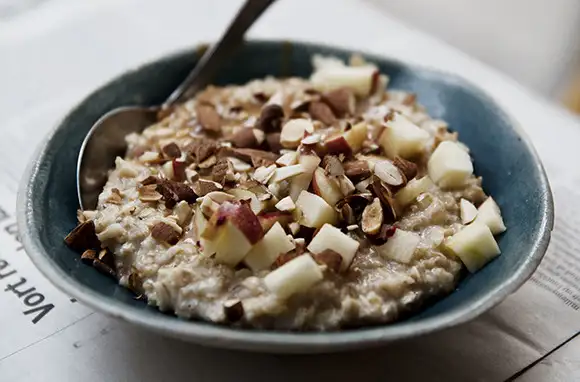
Grød (Porridge)
Affordable, honest, and good for the soul, grød (or porridge) is always just right, even among hipsters in Copenhagen's trendy Nørrebro district. And GRØD, the city's first porridge-only cafe, delivers big in its small, subterranean setting on Jægersborggade Street. Although the hearty dish is one of the oldest types of Nordic foods, here, owner Lasse Andersen goes beyond typical rice or oatmeal by introducing a whole-grain medley of different flavor combinations that change with the seasons. Imagine spelt porridge with chestnut puree, apple, and toasted almonds or kale-parmesan risotto topped with freeze-dried cranberries. Best of all, he keeps it all wallet-friendly, with lunches for around 35 kroner (about $6) and dinner portions for 55 kroner (about $9).
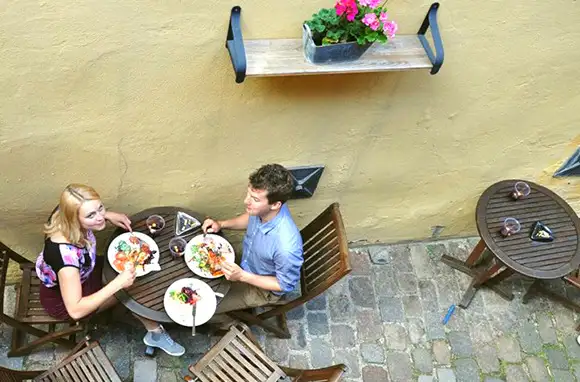
Recycled Food
"They are damn ugly to be honest but they are still edible," says Rasmus Scheelke of the vegetables served at Rub & Stub, the surplus-food restaurant he cofounded in downtown Copenhagen. Perhaps not the typical description a restaurateur uses to entice you to sample his menu, but consider this: Food waste is a huge, worldwide problem, and most of it results from the notion that some food just isn't pretty enough to eat. Opened in September 2013, the restaurant—whose name is a Danish phrase similar to "lock, stock, and barrel" or "everything"—aims to counter this issue by rescuing perfectly good, though unfairly judged, ingredients before they get tossed away.
In addition to "leftover" donations from food suppliers, the mostly-volunteer restaurant cooks with whole herbs (not just the leafy tops), dishes out smaller portions (though second helpings are free), and offers doggie bags for taking home any meal left unfinished. It's the do-gooder way to "get wasted" while wining and dining out, and all proceeds go to development projects in Africa.
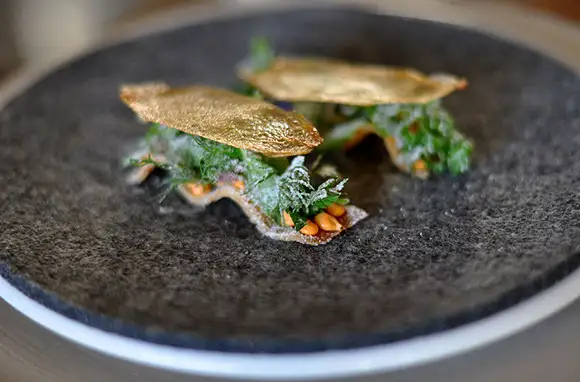
New Nordic Cuisine
Denmark is a small nation, so when Danes claim to source their food locally, they really mean it. So much so that two of the country's chefs, René Redzepi of noma fame and Erwin Lauterbach, plus several others from the Nordic region, wrote a manifesto to declare their passion for "purity, freshness, and simplicity." With a focus on foraging and eating with the seasons, their vision for the "New Nordic Kitchen" is literally getting to the root of the region's food culture, and it has put Copenhagen, in particular, on the map as a gastronomic capital.
While pioneer noma is often considered the world's best restaurant, the concept of hyper-local—and sustainable—dining has sprouted in hot spots all over the city. For example, former noma head chef Matt Orlando opened Amass in 2013, transforming an old shipyard building into an open-concept kitchen that's partly supplied by its own garden. Others on the scene include Geranium, Relæ, Manfreds, and Radio.
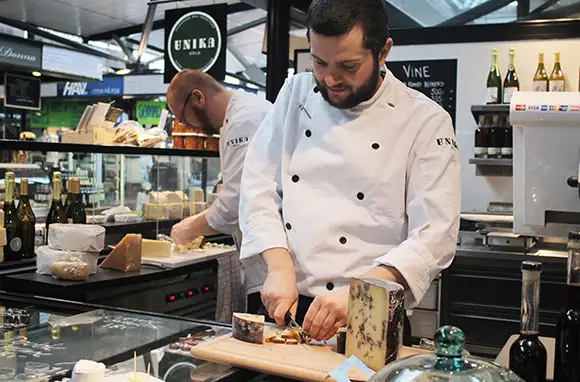
Market Food
Artisanal cheese. Craft beer. Smoked fish. Torvehallerne, Copenhagen's first covered food market, might be the city's answer to London's Borough Market or Paul Bocuse's Les Halles de Lyon, but there's one thing that clearly sets it apart: a decidedly Danish aesthetic, with orderly queues of hungry patrons and about 80 purveyors, all buying and selling in subdued synchronicity. Finally realized in 2011 after a decade of planning and building, the two glass-and-steel food halls (designed by architect Hans Peter Hagens) opened near Nørreport Station in Israels Plads, a once vibrant but longtime neglected outdoor marketplace area.
Nowadays, upscale Torvehallerne attracts city life, with office workers bicycling over for a quick lunch and locals gathering outside at communal tables on pleasant-weather days. But, as a microcosm of Copenhagen's food scene, it's also a must-stop for tourists, who can sample many of the city's favorite restaurants and shops (several mentioned in this article) in one central location. Not to be missed: Arla Unika for cheese, Omegn for beer and charcuterie, and Summerbird for chocolate (be sure to try the flødebolle with passion fruit, rosehip, and black currant).
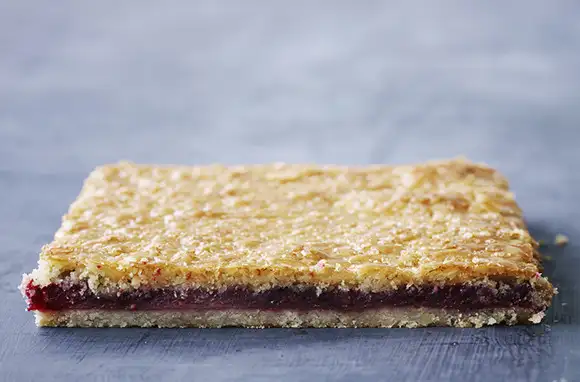
Hindbærsnitter (Raspberry Bars)
Which came first, the Pop-Tart or the hindbærsnitte? Though it's easy to mistake one for the other—both being flat, short-crust pastries sandwiched with jam, glazed with icing, and flecked with colorful sprinkles—it hardly matters, because once you've tasted the handmade Danish doppelganger, you'll never go back to the cardboard-like toaster version again. In just about any bakery in Denmark, hindbærsnitter (which translates roughly to "raspberry slices" or "raspberry bars") are baked fresh and served directly from the pastry case to your mouth. No box or toaster required.
In Copenhagen, Meyers Bageri defies tradition with a hindbærsnitte loaded with vanilla and almonds and topped with a crust of demerara sugar (instead of sprinkles). Lauras Bakery dresses up its bars with pink icing and crumbled, freeze-dried raspberries.
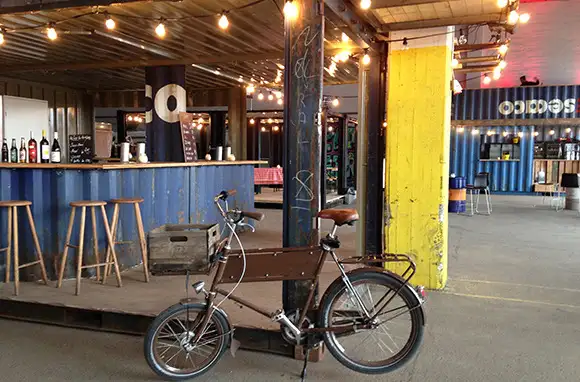
Copenhagen Street Food
Want to hit the streets in search of amazing cheap eats? Then defy logic by heading indoors to Copenhagen's latest food venue, where creativity, quality, and affordability intersect in the most tantalizing ways. Since April 2014, Copenhagen Street Food had been fueling the economy with its warehouse full of mobile kitchens. Parked inside its cavernous hall, about two dozen folksy trucks and vintage campers doll up an authentic but eclectic mix of made-from-scratch meals on wheels. Flavors hail from Cuba, Mexico, Italy, Denmark, and beyond—if you can fly there, you can likely eat it here. The best part? Each vendor must offer at least one dish for 50 to 75 kroner (about $8 to $12).
The project, which so far has a four-year lease on its Papirøen (Paper Island) location overlooking Copenhagen Harbour, has an eye on sustainability. The building itself is insulated by clamshells, and everything inside is made from reused materials that can be recycled or packed up and moved. And while some of the food served is organic, the main focus is on local sourcing, artistic expression, and, above all, great taste.
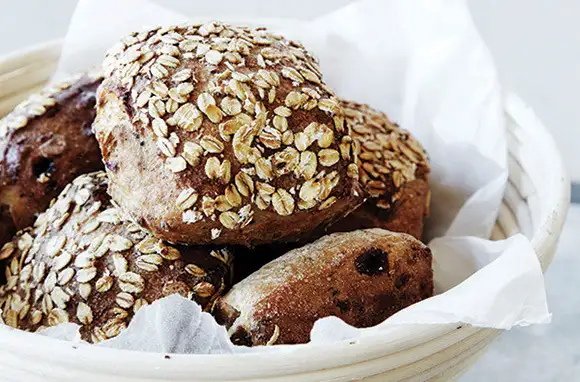
Brød (Bread)
Brød (or bread) is on the rise in Copenhagen. While, for centuries, Danes have regularly eaten rugbrød—a highly nutritious dark rye bread that puts ubiquitous white bread to shame—other healthy breads (that are protein and mineral rich) have gotten lost in time. However, in the spirit of eating local and organic, coupled with a growing interest in whole foods, what was old is new again. And today, some bakers are dipping into the Nordic Gene Bank's seed vault to recreate forgotten flours made from endemic, ancient grains such as spelt and barley. Others are simply capturing Nordic flavors by sourcing locally.
Meyers Bageri has its own mill and uses only grains grown in the region (mostly in Denmark). Emmerys bakes with organic and biodynamic flours and can trace most of them to Danish farmers. And at Lauras Bakery, breads are handmade using natural yeast starters and local ingredients.
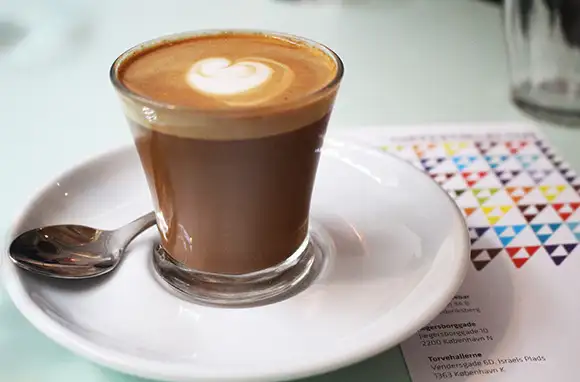
Coffee
With cold, dark winters, it's no wonder that Nordic countries top the list when it comes to coffee consumption (Denmark is in the number-four spot, close behind Finland, Norway, and Iceland). But seeking more than the basic desire to stay warm and awake, the Danes have created the nebulous cultural concept of hygge, which vaguely translates into "coziness" and usually involves a pleasant atmosphere, togetherness, candlelight, and hot cups of joe. While the tradition remains strong—and endlessly inviting—Denmark's coffee culture is evolving, particularly in Copenhagen. Recently, numerous independent coffee shops have transcended the daily grind to offer top-notch baristas, beans, and brews in addition to their comfy hyggelig spaces.
At cult favorite Coffee Collective, a specialty micro roaster on Jaegersborggade Street, award-winning coffees come slowly, one at a time, but are well worth the wait. In its "laboratory," Kent Kaffe Laboratorium experiments with different brewing methods, including one over a Bunsen burner.
You Might Also Like:
Watch Now: Visit Denmark: Five Senses
We hand-pick everything we recommend and select items through testing and reviews. Some products are sent to us free of charge with no incentive to offer a favorable review. We offer our unbiased opinions and do not accept compensation to review products. All items are in stock and prices are accurate at the time of publication. If you buy something through our links, we may earn a commission.
Related
Top Fares From
Today's Top Travel Deals
Brought to you by ShermansTravel
Shop and Save with Country Inns...
Patricia Magaña
 Hotel & Lodging Deals
Hotel & Lodging Deals
$229 -- Chicago: Discounted Rates and...
Francesca Miele
 Hotel & Lodging Deals
$229+
Hotel & Lodging Deals
$229+
$188 -- Honolulu: Save on Oceanview...
Abigail Lamay
 Hotel & Lodging Deals
$188+
Hotel & Lodging Deals
$188+
